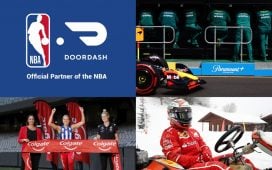
What sounds like a simple request is all but impossible unless you ask some tough questions and stick to a strict relevance strategy, writes Jamal al-Mawed
A brand once handed me a short product video and said: “We need you to make this go viral on social media.”
That sentence is a fantastic one-liner when spoken in a room full of intelligent marketers, but there are many agencies suffering right now trying to satisfy precisely this kind of request made in earnest.
Believe it or not, there is a segment of our industry that still believes ‘going viral’ is the result of some technical digital manipulation rather than genuine human interest.
In these people’s minds, Facebook boosts, promoted tweets, search-engine optimisation (SEO) and paid Instagram shout-outs are enough to make their bland or ‘artistic’ video become an internet sensation.
If that thinking is accurate, then Charlie’s parents must have had a massive budget when he decided to bite his brother’s finger, while the person who filmed a sneezing panda cub must have seeded his content with some powerful panda influencers.
It may sound obvious to preach that content is king, but perhaps even more important is what I call a relevance strategy.
Viral content is about how much something is passed on, so ask yourself at every step: is this relevant enough to be shared?
First off, you can’t create your content before deciding on your strategy.
The types of content that go viral tend to fall into five categories: shocking, moving, funny, cute and sexy/pretty. These themes are vehicles around which to build your brand message, and each of them can reach a different audience. So pick one that is relevant to your target audience and your brand. Next, develop and package your content based on this theme. Ask yourself: is this content relevant?
Next, remember the adage: I don’t share your brand with my friends because I like your brand; I share it because I like my friends.
Unless the content provides value by stirring some kind of human reaction in the viewer, your audience might enjoy it but see no reason to share it.
Also, different people will see different value in the same message. Teenagers in a first world country might love watching your video of dancing babies, but are they interested in buying your product? And even more importantly: after their chuckle, would they share it? Ask yourself: is the audience relevant?
The third mistake is the assumption that social media is one entity. Wrong, wrong, wrong. A person’s behaviour can differ depending on the platform.
For example, if I use my Twitter mostly for current affairs and business news then I probably won’t retweet your moving soft drink Ramadan video, but if I come across it on Facebook I might think about sharing it because I use that for interaction with friends and family. Ask yourself: is the platform relevant?
One of the biggest social media mistakes is not identifying the right moment to start your viral strategy. When Oreo put out its “You can still dunk in the dark” tweet during the Superbowl blackout three years ago, the brand came out with its message using the vehicle of humour during a window of a few minutes when that humour was relevant to millions of people. At any other time that tweet would have meant nothing. Ask yourself: is the timing relevant?
Once you have answered those questions, then by all means invest in the necessary amplifiers such as digital spend, influencer marketing and sponsored posts to give your content some viral visibility rocket fuel. But remember that an amplifier only amplifies; it can’t make your content relevant for you.
An example I love to use is Henkel’s ‘A Declaration of Love’ by Schwarzkopf Nectra Colour.
Watch it and you will see how the brand chose the vehicle of moving content, infused its message unobtrusively (fantastic hair colours), targeted the relevant audience (women), used a relevant platform (YouTube) and chose its timing (Valentine’s Day).
The video has almost 20 million views on its YouTube channel alone, not counting shorter versions doing the rounds on Instagram and a separate view count on Facebook videos.
They made that video go viral.
Jamal al-Mawed is regional PR & corporate communications manager at Rolls-Royce Motor Cars









